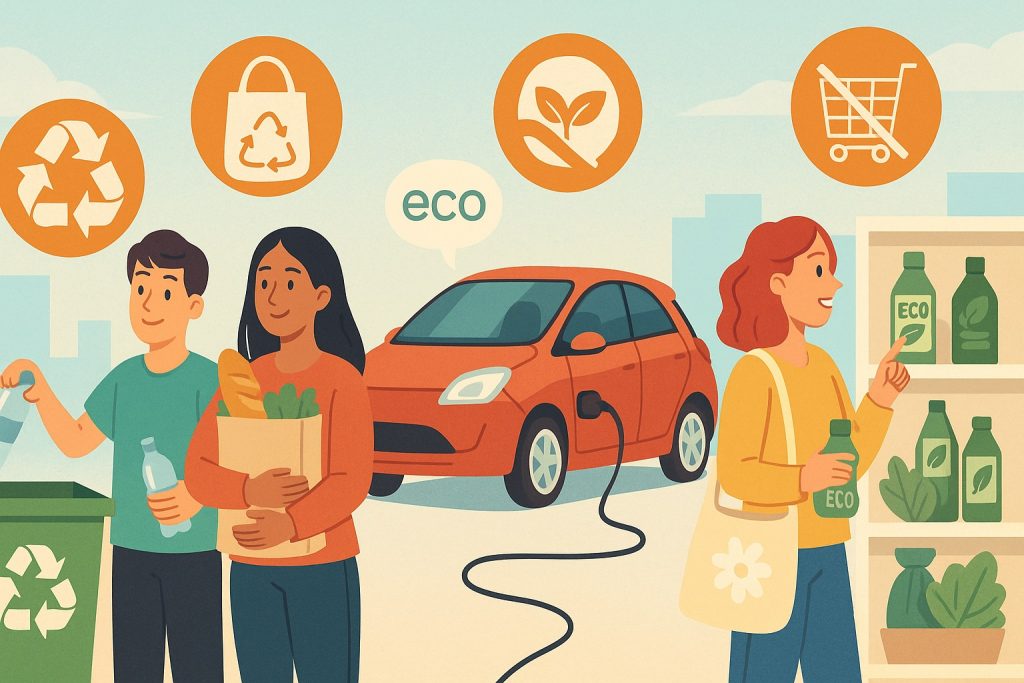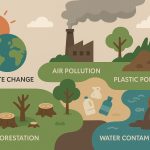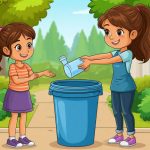Environmental awareness has grown significantly over the past few decades, but along with it, many myths and misconceptions have spread. Even well-educated, environmentally conscious individuals may hold on to outdated or misleading ideas. These myths can lead to ineffective actions, misplaced guilt, or even harm. In this article, we debunk some of the most common environmental myths and explain what the science really says.
Myth 1: “Recycling is the best way to help the planet.”
While recycling is important, it’s not the most effective way to reduce environmental impact. In fact, the waste hierarchy ranks recycling third after:
- Reducing consumption
- Reusing existing items
Many materials, especially plastic, degrade in quality after recycling and can only be recycled once or twice. Not all plastics are recyclable, and contaminated items often end up in landfills anyway.
Truth: Reducing consumption and reusing items have a far bigger environmental benefit than recycling alone.
Myth 2: “Electric cars are completely green.”
Electric vehicles (EVs) produce zero tailpipe emissions, but they are not entirely clean:
- Battery production requires rare earth metals, often mined in environmentally damaging ways
- Electricity for charging may come from fossil fuels
- Manufacturing an EV has a larger carbon footprint than a traditional car
However, EVs generally become more environmentally friendly over their lifespan, especially when powered by renewable energy.
Truth: EVs are better than gasoline cars in the long run, but their impact depends on how electricity is generated and how sustainably they are produced.
Myth 3: “Paper is always better than plastic.”
Many people choose paper bags over plastic ones thinking it’s the greener choice. However, paper production is resource-intensive:
- It requires more water and energy
- Paper bags are heavier, increasing transport emissions
- They often aren’t reused, unlike some plastic bags
Truth: Reusable bags made of fabric or durable plastic are better — as long as they’re used many times.
Myth 4: “Organic food is always better for the environment.”
Organic farming avoids synthetic pesticides and fertilizers, but that doesn’t automatically make it eco-friendly:
- It usually requires more land to produce the same amount of food
- Some organic pesticides are less effective and still toxic to wildlife
- Food transported long distances can have a high carbon footprint — even if it’s organic
Truth: Local, seasonal, and minimally processed food — whether organic or not — often has a lower environmental impact.
Myth 5: “Bamboo is always a sustainable material.”
Bamboo is fast-growing and renewable, but:
- Most bamboo products are processed chemically, especially in textiles
- Unsustainable farming practices can lead to deforestation and loss of biodiversity
- Some bamboo items are shipped thousands of miles, adding to their carbon footprint
Truth: Bamboo can be sustainable, but only when grown and harvested responsibly and used in the right applications.
Myth 6: “Buying ‘eco-friendly’ products is enough to save the planet.”
Green marketing often promotes the idea that we can consume our way to sustainability — but “eco-friendly” still means consumption.
- Many so-called green products are only slightly better than conventional ones
- Overconsumption — even of sustainable goods — is still harmful
- The carbon footprint of production, packaging, and shipping adds up
Truth: The most sustainable product is often the one you don’t buy.
Myth 7: “Climate change is mainly about warmer weather.”
Climate change is not just about heat — it’s about disrupted global systems:
- Increased storm intensity, flooding, droughts, and wildfires
- Melting glaciers and rising sea levels
- Shifting ecosystems and food supply threats
Truth: Climate change brings unpredictable, extreme events — not just warmer days.
Conclusion
Even smart, well-informed people can fall for simplified or outdated environmental narratives. Staying informed, questioning assumptions, and relying on science-based information is key to making real progress. Environmental action is more than good intentions — it’s about making smart, effective choices.
Glossary
- Waste hierarchy – a system ranking environmental strategies from most to least effective: reduce, reuse, recycle
- Carbon footprint – the total greenhouse gases caused by an individual, product, or activity
- Eco-friendly – products or actions that claim to be environmentally responsible
- Overconsumption – using more resources than necessary, leading to waste and pollution
- Sustainable – using resources in a way that meets current needs without harming future generations


